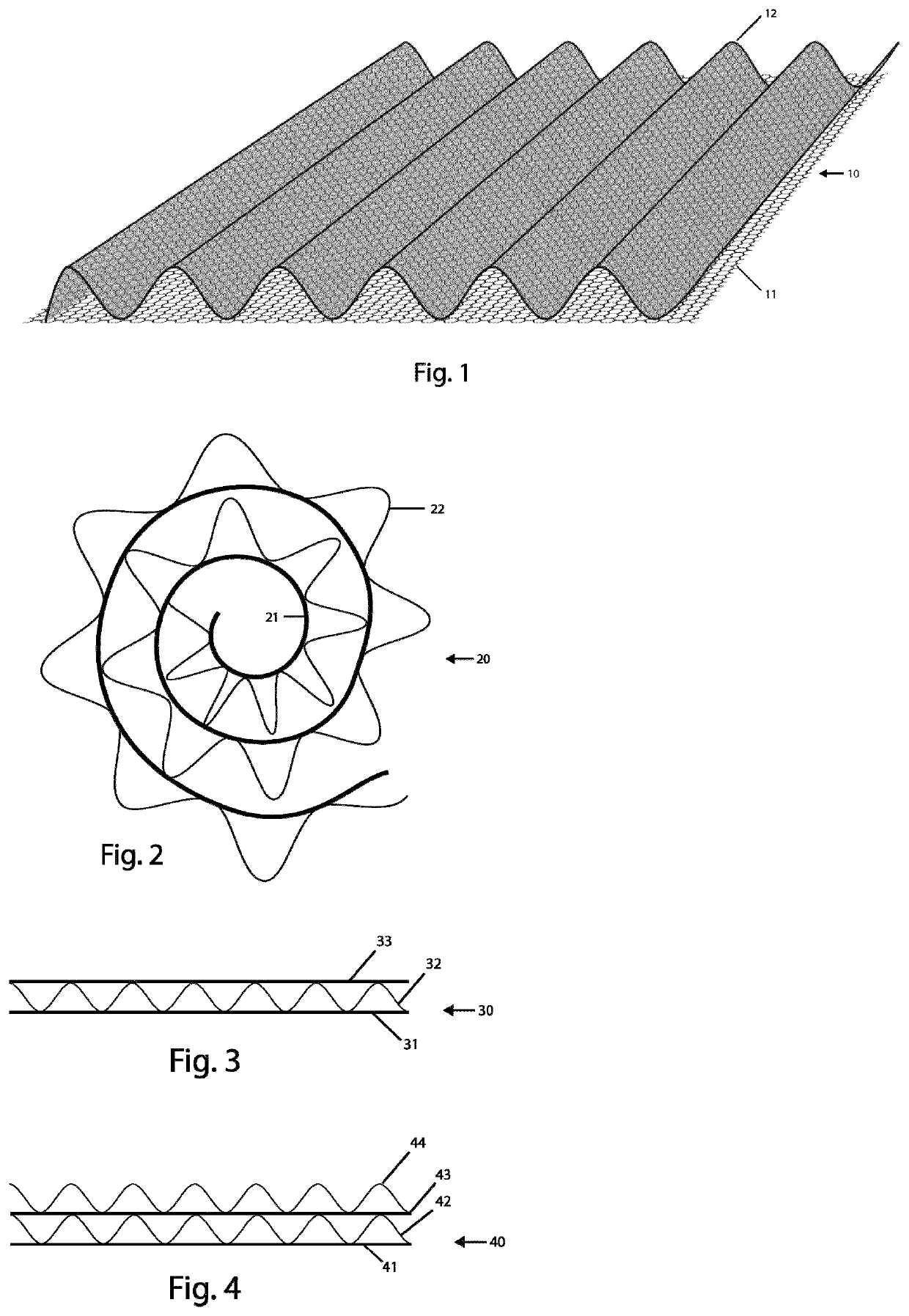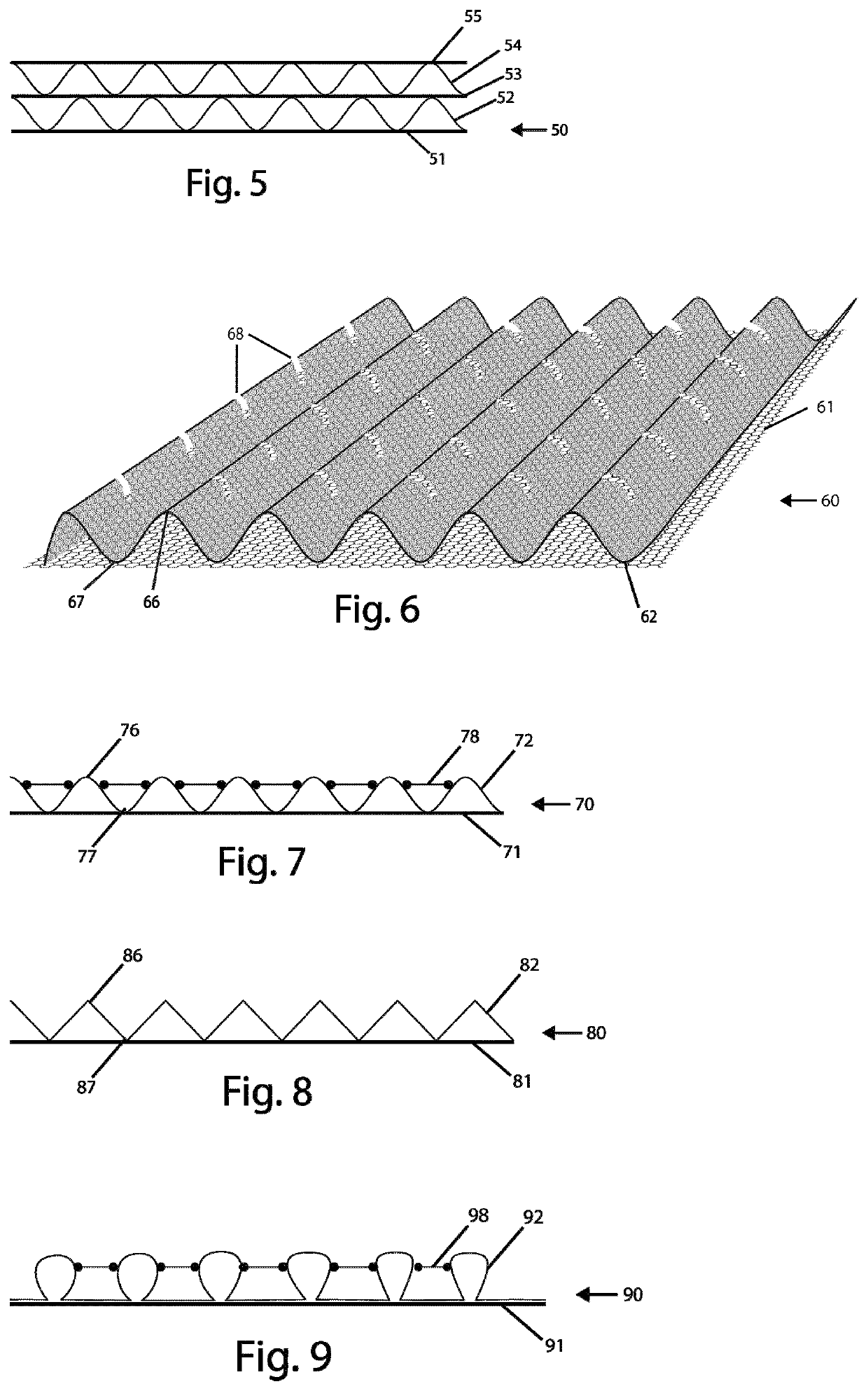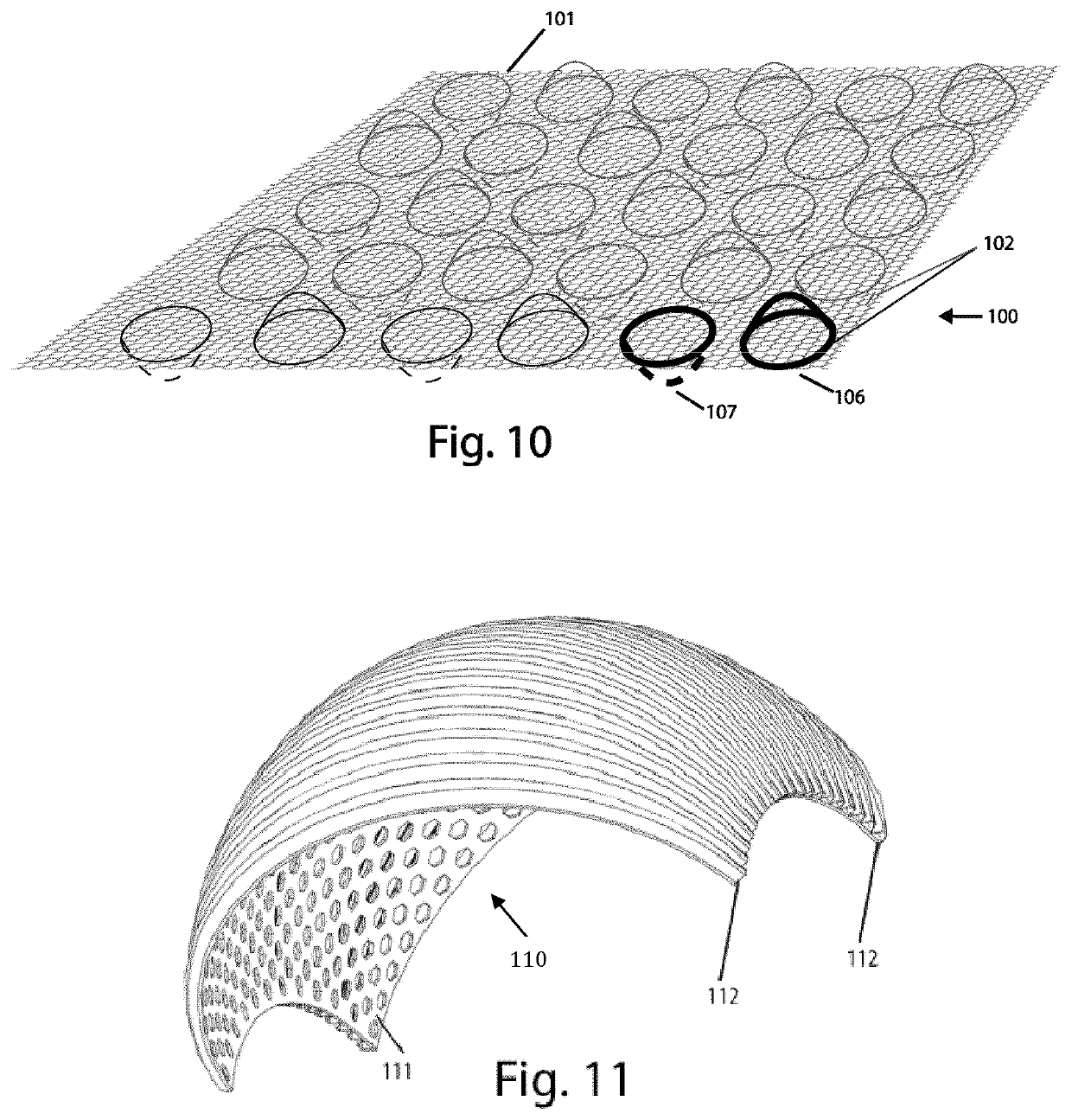Three-dimensional polymeric medical implants
a medical implant and three-dimensional technology, applied in the field of three-dimensional resorbable polymeric medical implants, can solve the problems of limited ability, difficult control of load-bearing capacity, and unorganized porous structures that suffer from varying pore homogeneity,
- Summary
- Abstract
- Description
- Claims
- Application Information
AI Technical Summary
Benefits of technology
Problems solved by technology
Method used
Image
Examples
first embodiment
[0020]FIG. 1 illustrates schematically a medical implant 10 according to the present invention. The medical implant 10 comprises a thin porous component 11 and a load-bearing component 12, which in FIG. 1 is arranged on top of the porous component 11 and is connected to the porous component 11. The load-bearing component 12 can be firmly attached, e.g. sewed or tied, to the porous component 11, or be more loosely connected to the porous component 11, e.g. glued or welded, to the porous component 11. The porous component 11 has a limited thickness, approximately 0.02 mm to 1.5 mm thick, and more preferably 0.05 mm to 1.0 mm thick, and can be regarded as a substantially two-dimensional structure and is, for example, arranged as a layer or sheet. Porous components described herein may also be referred to as surface components. The load bearing component 12 is characterized by having both a thickness and a height. The load bearing component 12 is defined as being a flat structure charac...
second embodiment
[0023]In FIG. 2, a medical implant according to the present invention is schematically illustrated in cross-section. Here, a medical implant 20, which essentially has the same features as the medical implant 10 described in conjunction with FIG. 1, comprises a thin porous component 21 and a load-bearing and volume-creating component 22, which is connected to the porous component 21. As illustrated in FIG. 2, the medical implant 20 has been given a rolled configuration, and has the shape of spiral, to thereby create a plug for implantation in abnormal bodily orifices, such as fistulas, but more specifically may be used for endogenous tissue engineering purposes within such areas as rhinoplasty, nipple regeneration after mastectomy, reconstructive surgery for cleft palate, regeneration of bone in clavicle fracture and long-bone fractures in combination with extra support. The spiral configuration of medical implant 20 can be obtained in, for example, an annealing process, or the rolle...
third embodiment
[0024]FIG. 3 shows a cross-sectional view of a medical implant 30 according to the present invention, which comprises a first thin porous component 31, a load-bearing and volume-creating component 32, and a second thin porous component 33. The load-bearing and volume-creating component 32 is positioned between the first porous component 31 and the second porous component 33 in a sandwich structure. As described above, the load-bearing component 32 can be connected to the porous components 31, 33 by e.g. sewing, knitting, gluing or welding, but the triple-layer embodiment shown in FIG. 3 provides for further possibilities in that the load-bearing and volume-creating component 32 can be confined and held in place between the first porous component 31 and the second porous component 33, which are connected to each by e.g. sewing, knitting, gluing or welding. In other words, the load-bearing component 32 can be held in place in a flat bag or pouch created by the porous components 31, 33...
PUM
| Property | Measurement | Unit |
|---|---|---|
| porosity | aaaaa | aaaaa |
| thick | aaaaa | aaaaa |
| thick | aaaaa | aaaaa |
Abstract
Description
Claims
Application Information
 Login to View More
Login to View More - R&D
- Intellectual Property
- Life Sciences
- Materials
- Tech Scout
- Unparalleled Data Quality
- Higher Quality Content
- 60% Fewer Hallucinations
Browse by: Latest US Patents, China's latest patents, Technical Efficacy Thesaurus, Application Domain, Technology Topic, Popular Technical Reports.
© 2025 PatSnap. All rights reserved.Legal|Privacy policy|Modern Slavery Act Transparency Statement|Sitemap|About US| Contact US: help@patsnap.com



